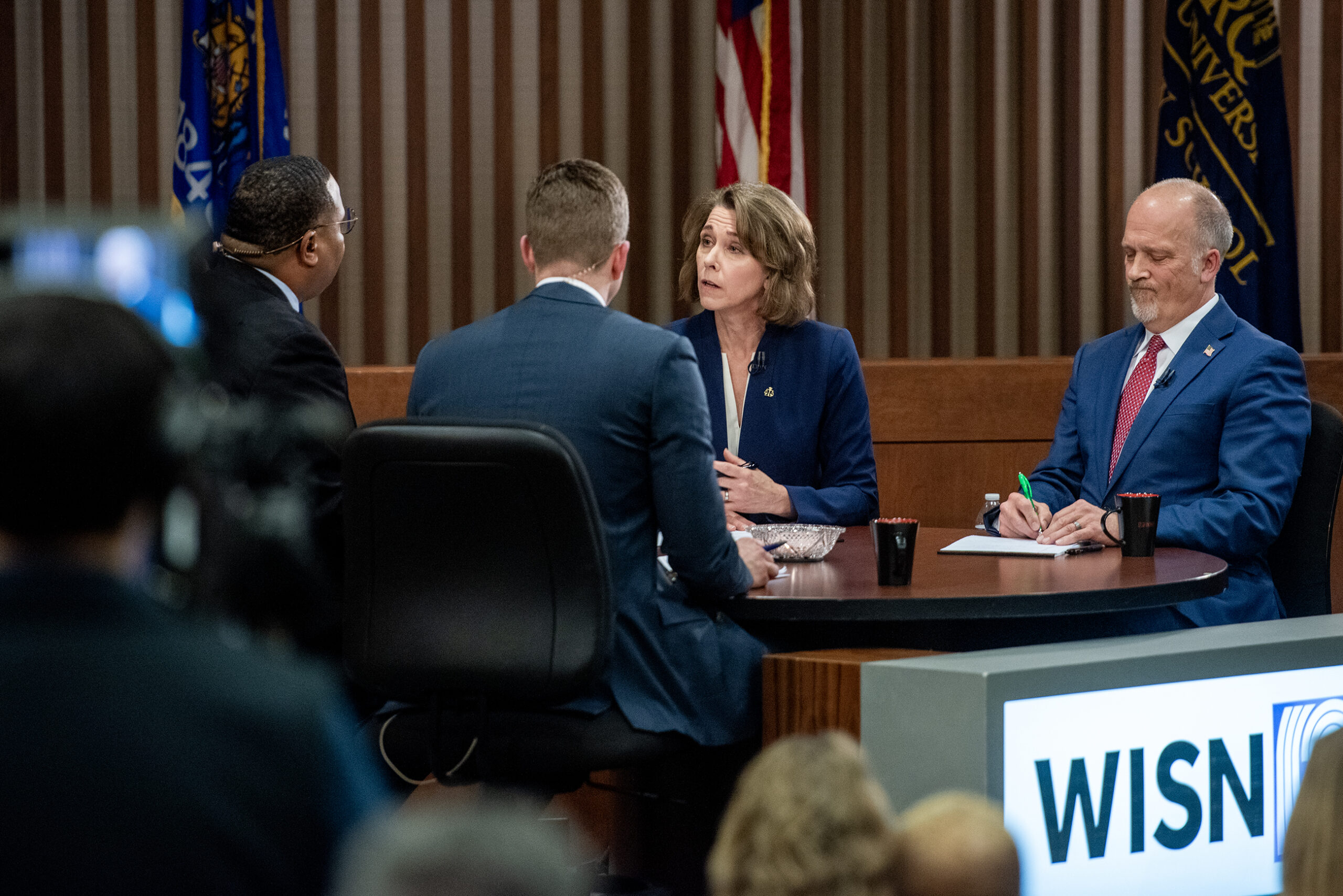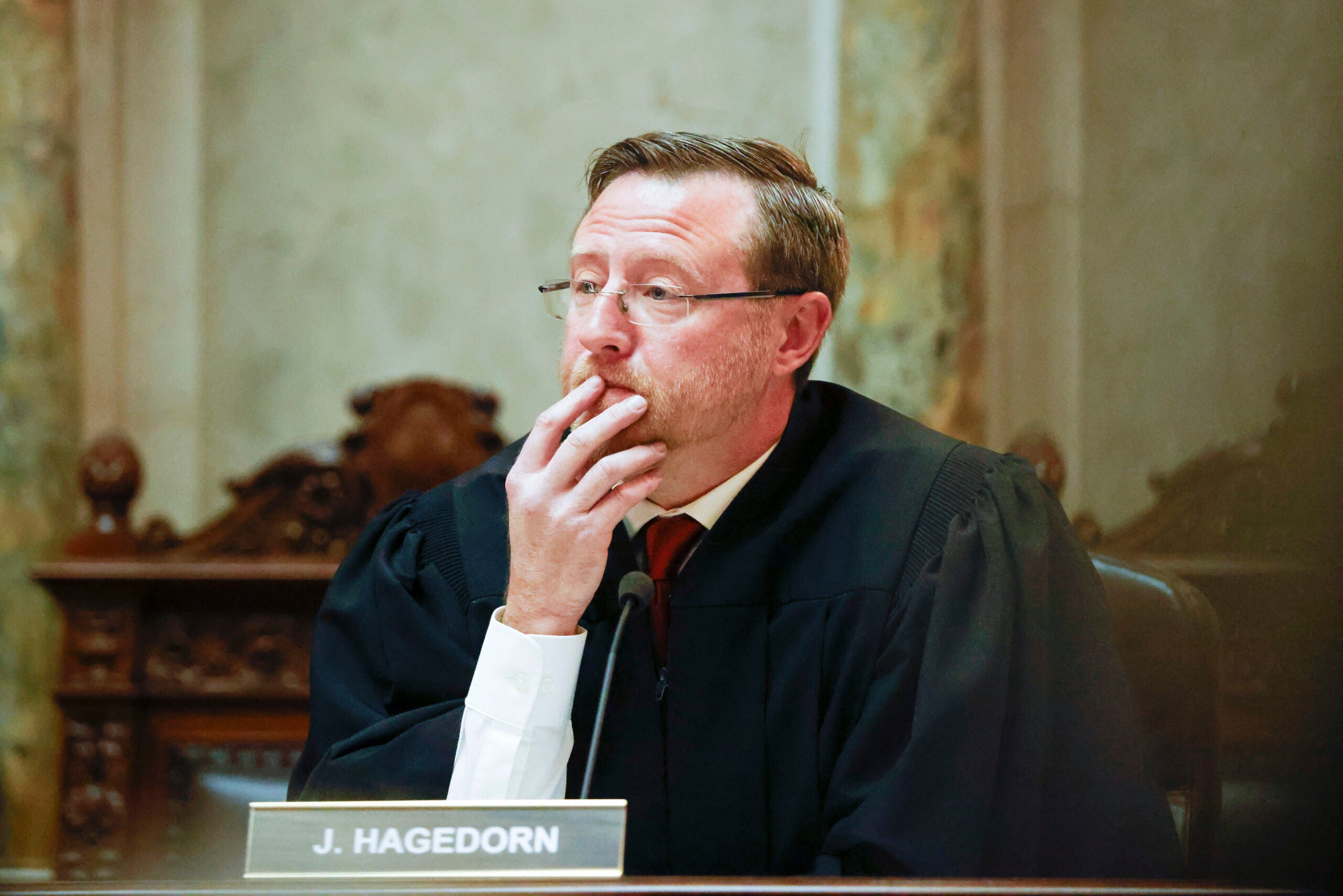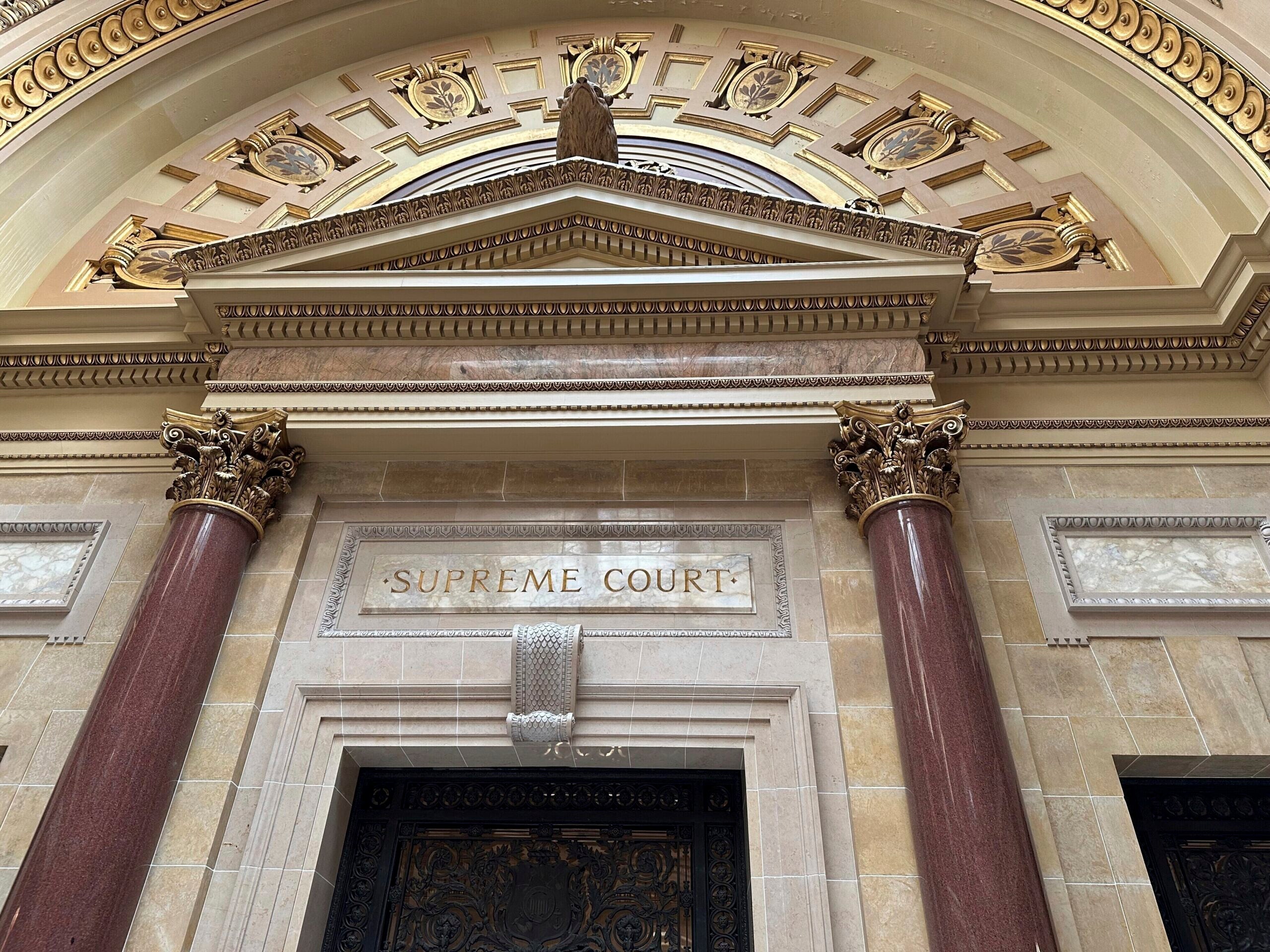Wisconsin Supreme Court justices offered hints Wednesday about how they might view a “least changes” approach to redistricting in a case that could decide the state’s political boundaries for the next decade.
During hours of arguments, the court heard from lawyers for Democratic Gov. Tony Evers and Republican legislative leaders among others, most of whom submitted their own maps to the court. Justices could endorse one of the plans entirely or decide to make changes.
The court took the case in September before Evers and GOP lawmakers failed to agree on a new map themselves, an impasse that was widely expected given the political implications of redistricting.
Stay informed on the latest news
Sign up for WPR’s email newsletter.
States are required to redraw their political boundaries at least once every decade following the release of new population data by the U.S. Census. The last time that happened in 2011, Republicans controlled both houses of the Legislature and the governor’s office, letting them draw maps that cemented their majorities even in years when Democratic candidates performed well statewide.
The state Supreme Court’s conservative majority made clear in a November ruling it wanted all the plans submitted in this case to closely follow the 2011 map, endorsing a “least changes” approach advocated by the conservative Wisconsin Institute for Law and Liberty.
There’s nothing in state law or the Wisconsin Constitution that spells out precisely how to measure “least changes,” but by one metric, Evers’ plan would be best: It would move the fewest people from one state Assembly district to another.
“No matter how you slice it, the governor’s maps make the least changes,” argued Evers’ attorney Anthony Russomanno, an assistant attorney general with the Wisconsin Department of Justice.
But the attorney for Republican lawmakers focused on other metrics, noting the maps submitted by the Legislature had a lower “population deviation” than the governor’s, meaning the number of constituents from district to district was closer to equal.
“Only the Legislature’s plan can be described to meet that constitutional standard,” said Taylor Meehan, an attorney representing the Legislature.
For any plan to become law, it would need the approval of four of the Supreme Court’s seven justices. While conservatives have a 4-3 majority on the court, there’s no guarantee they’ll vote as a block. The outcome of the case likely hinges on conservative Justice Brian Hagedorn, the court’s swing vote.
Hagedorn sided with the rest of the court’s conservatives in its November redistricting ruling, but on Wednesday, he questioned Meehan at length over the Legislature’s focus on population deviation, suggesting it was inconsistent with what the court had asked for.
“I’m having a hard time understanding why we would now use that standard when that isn’t what we told the parties,” Hagedorn said. “If we told the parties we wanted you to submit maps that have perfect equality population … we should have said so. But we didn’t say so. We said something quite, quite different. And I don’t want to be Charlie Brown and Lucy here.”
Other conservative justices sent distinctly different signals than Hagedorn, hinting they might favor the Legislature’s argument.
“We did emphasize the paramount importance of population equality,” said conservative Justice Rebecca Bradley.
At one point during arguments, Bradley also disputed the idea that a “least changes” map should prioritize maps that retain as much of the current districts as possible, known in redistricting as “core retention.”
“Core retention isn’t mentioned anywhere in the majority order,” Bradley said.
Conservative Chief Justice Annette Ziegler focused on “municipal splits,” the number of communities that would be divided into two or more state Assembly districts under the competing maps. The map Republicans drew in 2011 was disruptive when it came to municipal splits, but the Legislature’s latest redistricting plan would split fewer communities than the governor’s.
“It’s important to those local communities to not be split up and divided,” Ziegler said.
Much of the arguments Wednesday focused on whether the proposed maps would comply with the federal Voting Rights Act, or VRA, which protects the right of Black and Latino voters to elect candidates of their choice when drawing district lines.
The Legislature’s plan would draw six Black-majority VRA districts while maps drawn by the governor and a group of plaintiffs led by Black Leaders Organizing for Communities, or BLOC, include seven districts where Black voters have an opportunity to elect candidates of their choice.
Conservative Justice Patience Roggensack said Milwaukee questioned whether the VRA should apply at all in this lawsuit, noting Milwaukee had a Black U.S. representative, two Black senators, and five Black representatives.
“I look at the success of African Americans being elected to public office year after year in Milwaukee,” Roggensack said. “And they’re repeatedly and repeatedly elected. I have real problems with just forgetting about that.”
But BLOC attorney Doug Poland said that statistically, Black candidates still faced challenges in Wisconsin, a key test when it comes to whether courts should apply the Voting Rights Act.
“Milwaukee has never elected a Black mayor before. The first Black Milwaukee County executive was only elected in 2020,” Poland said. “There has been a lack of success of Black candidates overall in the state of Wisconsin.”
Poland, and BLOC, have also joined a federal redistricting lawsuit which has been on pause while the state Supreme Court case plays out. Once the state Supreme Court hands down its decision, the federal court could still hear arguments in any Voting Rights Act challenge.
Regardless of which map the Wisconsin Supreme Court chooses, it’s likely to be good for Republicans politically. A Marquette University analysis of the proposals found all would likely maintain big Republican majorities in the Legislature, but the plan drawn by GOP lawmakers could give them a chance at a veto-proof supermajority.
For more on the history of redistricting in Wisconsin and how it impacts political power in the state, check out WPR’s investigative podcast series, “Mapped Out.”
Wisconsin Public Radio, © Copyright 2025, Board of Regents of the University of Wisconsin System and Wisconsin Educational Communications Board.



